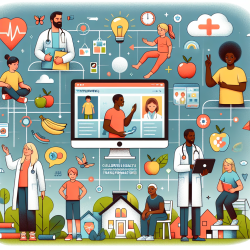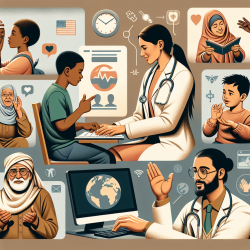Introduction
In the ever-evolving field of healthcare, staying informed about the latest research is crucial for practitioners who aim to deliver the best outcomes for their patients. One such area of research focuses on HPV vaccination among sexual and gender minority youth (SGMY) living with or at high risk for HIV. This blog post delves into the findings of a recent study and explores how practitioners can leverage these insights to enhance their practice and improve youth health outcomes.
Understanding the Research
The study titled HPV Vaccination among Sexual and Gender Minority Youth Living with or at High-Risk for HIV provides a comprehensive analysis of vaccination rates and associated factors among youth aged 14-24. Conducted across Los Angeles and New Orleans, the study involved 1,628 participants recruited from clinics and community agencies specializing in serving SGMY.
The findings revealed that 51.9% of the youth had received the HPV vaccine. Notably, vaccination rates were higher among younger individuals, those with greater education, a primary healthcare provider, and those diagnosed with HIV. Conversely, youth experiencing out-of-home situations such as homelessness or incarceration had lower vaccination rates.
Implications for Practitioners
Practitioners working with youth, particularly those in high-risk groups, can draw several actionable insights from this research:
- Targeted Interventions: Develop programs specifically aimed at youth experiencing multiple life stressors, such as homelessness or mental health challenges. Tailoring interventions to address the unique needs of these groups can significantly improve vaccination rates.
- Education and Awareness: Increase efforts to educate both youth and their caregivers about the importance of HPV vaccination. Providing clear, factual information can dispel myths and encourage vaccine uptake.
- Collaboration with Healthcare Providers: Encourage primary care physicians to actively discuss and recommend HPV vaccination to their young patients. Strong endorsements from healthcare providers have been shown to increase vaccination rates.
- Utilizing Schools and Community Centers: Schools and community centers can serve as convenient sites for vaccination programs, especially for youth who may not have regular access to healthcare facilities.
Encouraging Further Research
While this study provides valuable insights, it also highlights the need for further research to explore the barriers and facilitators of HPV vaccination among diverse youth populations. Practitioners are encouraged to engage in or support research efforts that aim to understand and address these challenges.
Conclusion
By implementing the outcomes of this research, practitioners can play a pivotal role in increasing HPV vaccination rates among high-risk youth. Through targeted interventions, education, and collaboration with healthcare providers, we can create a healthier future for vulnerable populations.
To read the original research paper, please follow this link: HPV Vaccination among Sexual and Gender Minority Youth Living with or at High-Risk for HIV.










